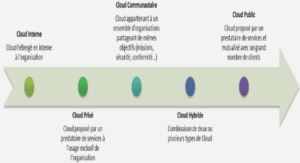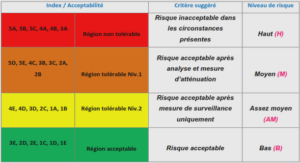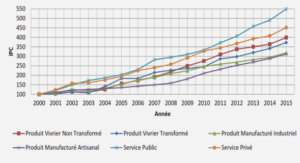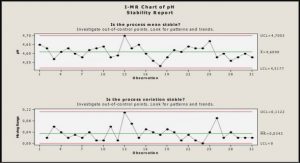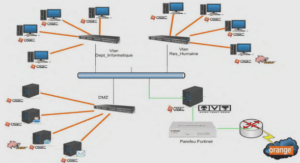Calibrage des caméras classiques à l’aide des éléments de l’optique diffractive
Fisheye lens calibration using virtual grid
Dans la première partie de ce chapitre, une technique qui permet de calibrer une caméra fisheye en utilisant notre banc de calibrage est présentée. Ensuite, l’influence du nombre d’images et l’ordre du modèle de projection polynomial sur la qualité des résultats obtenus est examinée. Enfin, les résultats de la comparaison avec une mire de calibrage tridimensionnelle sont analysés.
L’article présenté dans ce chapitre est le suivant :
– ARFAOUI, A. & THIBAULT, S. 2013. Fisheye lens calibration using virtual grid. Applied optics, 52, 2577-2583 (Arfaoui and Thibault, 2013).
Contribution: Dans cet article, j’ai réalisé la totalité des expérimentations. J’ai effectué l’analyse des résultats et rédigé l’article sous la supervision de Dr. Simon Thibault.
Résumé
Une technique pour calibrer une caméra fisheye en utilisant des éléments croisés d’optique diffractive est présentée. Cette configuration génère des cibles réelles situées à l’infini, ce qui donne des points de calibrage précis et invariants par translation (modèle de projection réduit). Le calibrage a été réalisé en tournant la caméra autour de deux axes. Une comparaison de trois modèles de projection et une évaluation de l’influence du nombre d’images sur la qualité des résultats ont été proposées. La comparaison de nos paramètres estimés avec ceux calculés en utilisant un objet 3D montre que notre technique est efficace.
Abstract
We present herein a technique to calibrate fisheye lenses using Cross-Diffractive Optical Elements (CDOEs). The setup generated a robust and accurate virtual calibration grid and the calibration was performed by rotating the camera around two axis. We propose the comparison of three fisheye mathematical models and the evaluation of the number of images in the calibration process. The comparison of our experimental data according to the 3D calibration object results showed that our technique is efficient and reliable.
Introduction
A fisheye lens is a refractive optical system that provides a wide field of view of about 180 degrees and has a very large apparent depth of field which gives clear pictures without focus adjustment. Therefore, it is used in mobile robots, intelligent vehicles, surveillance and so on. In many such applications which involve accurate quantitative measurements, fisheye camera calibration is a crucial step. The required accuracy and the nature of the application are the main determinants of the model and the method of fisheye calibration. When lens distortion is not considered, camera calibration consists in the estimation of the perspective projection that represents the relationship between the target coordinates space and their projection in the image (Jain et al., 1995). This projection is based on the fact that the angle of incidence of the ray from an object point is equal to the angle between the ray and the optical axis. However, the radial distortion component for the fisheye lens is relatively high. Therefore, other projection models were developed and can be divided into three types. The first type is called the radial fisheye model and it describes the conversion from the perspective radial distance of a point in the image to its fisheye distorted image, such as the polynomial fisheye transform (Basu and Licardie, 1993), the division model (Fitzgibbon, 2001). The second type is the fisheye projection and it is based on the principle that the radial distance of an image point depends on the angle of incidence of the ray. The equidistant (Schneider et al., 2009), equisolid (Hughes et al., 2010a), orthographic (Nayar, 1997) and stereographic (Fleck, 1995) models could be briefly mentioned as examples of this. The third type is the field of view (FOV) model (Basu and Licardie, 1995) when the radial distance depends on the field of view of the camera. However, this model is not sufficient to model the complex distortion of the fisheye lens. To this end, it is recommended to use the combination of polynomial and FOV models (Devernay and Faugeras, 2001). Previous work has shown that fisheye calibration can be performed by using one or several images of a known or an unknown pattern. A calibration room which includes known 3D control points can be established and used to calibrate a fisheye camera with only one image (Schwalbe, 2005). When a known 2D calibration object is used, the camera is fixed and different images can be captured. For each image, the object is placed at different positions and orientations to produce a set of non-coplanar points needed for the non-linear minimization algorithms (Kannala and Brandt, 2004). If the target coordinates in the pattern are unknown, the estimation of camera parameters is called auto-calibration. A set of reliable point pairs in a sequence of images is sufficient to find intrinsic parameters (Kannala and Brandt, 2006, Li and Hartley, 2006, Micusik and Pajdla, 2006). Other kinds of methods used the property that the images of parallel lines converge at two vanishing points, and the line that intersects the two vanishing points also intersects the optical center (Hughes et al., 2010b). Calibration is herein performed by observing two sets of lines in horizontal and vertical directions (Zhu et al., 2009).
|
Table des matières
Introduction générale
Chapitre 1. Notions théoriques et revue de littérature
1.1 Les différents types d’objectifs
1.1.1 Les objectifs à focale fixe
1.1.2 Les objectifs à focale variable
1.1.3 Les objectifs grands angles
1.1.3.1 Objectifs catadioptriques
1.1.3.2 Objectif Fisheye et objectif panomorphe
1.2 La stéréovision
1.2.1 Définition
1.2.2 Calibrage de caméras
1.2.2.1 Calibrage des caméras panoramiques
1.2.2.2 Calibrage des caméras zoom
1.2.3.1 Géométrie épipolaire perspective
1.2.3.2 Géométrie épipolaire panoramique
1.2.4 Triangulation
1.3 Projection perspective
1.3.1 Modèle mathématique de la projection perspective
1.3.1.1 Transformation coordonnées/direction
1.3.1.2 Transformation direction/coordonnées normalisées
1.3.1.3 Transformation coordonnées normalisées/coordonnées image
1.3.2 Distorsions
1.3.2.1 Modèle de distorsions radiales et tangentielles
1.3.2.2 Modèle polynomial
1.3.2.3 Modèle logarithmique
1.3.2.4 Modèle de division
1.3.2.5 Modèle rationnel
1.3.3 Résolution du modèle
1.3.4 Mire de calibrage
Problématique et objectifs
Chapitre 2:Calibrage des caméras classiques à l’aide des éléments de l’optique diffractive
2.1 Lasers et réseaux de diffraction
2.1.1 Géométrie d’un faisceau laser
2.1.2 Réseaux de diffraction
2.1.3 Réseau de Dammann et éléments diffractifs
2.2 Banc de calibrage: DOE setup
2.3 Condition générale
2.4 Modèle mathématique de calibrage
2.5 Détection de points de contrôle dans l’image
2.5.1 Algorithme 1: Méthode binaire
2.5.2 Algorithme 2 : Méthode d’intensité
2.5.3 Comparaison des deux méthodes
2.6 Résultats pour des caméras aériennes
2.6.1 Conditions de travail
2.6.2 Caméras utilisées
2.6.3 Calcul des paramètres
2.7 Comparaison avec un objet de calibrage 3D
Chapitre 3: Fisheye lens calibration using virtual grid
3.1 Résumé
3.2 Abstract
3.3 Introduction
3.4 Setup for fisheye calibration
3.5 Fisheye calibration with CDOE
3.5.1 Calibration pattern
3.5.2 Fisheye projection
3.5.3 Projection procedures
3.6 Calibration Algorithm
3.7 Results and Discussion
3.8 Conclusion
Chapitre 4. Calibration of zoom-lens with virtual optical pattern
4.1 Résumé
4.2 Abstract
4.3 Introduction
4.4 Cross-diffractive optical element setup
4.4.1 Grating Fabrication
4.4.2 Grating Characterization
4.4.3 Experimental Setup
4.5 Fixed camera model using CDOE
4.6 Mathematical model for zoom-lens camera
4.7 Calibration algorithm for zoom-lens camera
4.8 Results and discussion
4.8.1 Step 1: CDOE pattern and image recording
4.8.2 Step 2: Camera calibration with L =20
4.8.3 Step 3: Fitting the models of internal parameters
4.8.4 Step 4: Global error optimization of the adjustable model
4.8.5 Step 5: Evaluation of the generality and repeatability of the calibration model
4.9 Conclusion
Chapitre 5. A new mathematical model for hybrid and panoramic stereovision systems: panoramic to rectilinear conversion model
5.1 Résumé
5.2 Abstract
5.3 Introduction
5.4 Mathematical formulation
5.4.1 Classical model
5.4.2 Fisheye and Panomorph camera models
5.4.3 Composed cubic Splines functions (CCS functions)
5.4.4 Epipolar geometry and Fundamental matrix
5.4.5 Retroprojection and triangulation
5.5 Stereovision calibration algorithm
5.6 Experimental results and discussion
5.7 Conclusions
Discussion générale, conclusions et perspectives de recherche.
Appendix A
Appendix B
Appendix C
Publications
Bibliographie
![]() Télécharger le rapport complet
Télécharger le rapport complet

